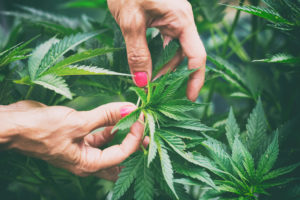4 Tips for Developing A Reliable Supply Chain for Hemp Businesses

The nascent hemp industry is yet to develop into an established, reliable supply chain due to the astronomical prices tagged on hemp and its related products.
It is vital for the industry players to derive consistent methods for monitoring and improving the production and sale of their products. Developing a sturdy structure enables hemp production companies to regulate the quality of their products, expenses, and timing to efficiently deliver impressive high-quality goods to their consumers.
Hemp executives, manufacturers, farmers, and processors need to understand these challenges and develop viable solutions to achieve their goals. Hemp is a widely known product, and over time, people have discovered various approaches to increase its potency. Revolutionary production methods like hydroponic cultivation play a vital role in increasing cannabinoid potency. The supply chain of cannabinoids depends on the farming methods, tools, and harvesting of the products.
It is imperative for the farmers to diligently choose their seeds and production methods, bearing in mind that their farming choices affect the quality of their products greatly. To achieve a consistent hemp supply chain, the following key points can help.
Develop an elaborate plan
Production planning is one major challenge hemp farmers face. Hemp farmers often find themselves scrambling to secure seeds and other crop inputs in July, long after the planting season has begun. Farmers should start planning for the next season just as the last season finalizes. Before August, you should already know your soil’s mineral or nutrient deficiencies so that you can take the necessary action. The 2018 Farm Bill sanctions the State Departments of Agriculture to hand in the hemp production plans to the United States Department of Agriculture (USDA) for approval before planting.
Farmers should also be diligent enough to scrutinize their last production season, consider the performance of their hemp seeds and the pressure of pests and diseases they underwent, and design viable pest management or crop protection plans. You should also design a harvesting plan that includes a processing facility contract to reap maximumly.
Analyze the costs
Many farmers run at a loss in the long run due to poor record-keeping of their production costs. Growing hemp requires seeds, crop protection labor, machines, irrigation water and fertilizer, which contribute to the production cost. Having a vivid record of your production costs is a prerequisite for assessing your farm’s productivity.
Failure to analyze the worth of hemp inputs and the foreseeable profits can cripple hemp supply due to depressed hemp prices. In 2021, farmers lost a fortune due to the disheartening prices of hemp products. Estimating production costs can be cumbersome.
For instance, placing a value on raw materials for a specific season is more manageable than unstable and constantly changing costs. The University of California designed a reference guide to assist farmers in production cost estimation.
Develop a feasible crop protection plan
Farmers were reaping benefits from using insects and biological control agents to curb destructive pests and diseases in the recent past. But over time, the researchers discovered that some agents such as glyphosate were a potential risk to human health.
Presently, consumers are increasingly insistent on organically produced cannabis Sativa. The US Environmental Protection Agency has approved ten pesticides for cannabis production.
Establish a consistent supply of labor
Most of the hemp farmers face the challenge of inadequate labor supply. Research shows that hemp farmers are yet to embrace agricultural guest worker programs, which offer consistent labor supply for hemp. The H-2 guest worker programs have been essential to the hemp industries in the USA for a long time, ensuring food security and uplifting the economy.
The US State Department conducts comprehensive interviews on the H-2 workers before permitting them to work in the country for a season, provided they go back to their home countries at the end of the season. These programs ensure that you are not stuck during the planting and harvesting season.
A steady supply chain of hemp products requires farmers, manufacturers and extractors to collaborate and create synergies to their advantage. Though much effort has been expended to enhance efficiency in the hemp business in the US, stakeholders must be on the lookout for emerging trends in doing business.
Read more:
4 Tips for Developing A Reliable Supply Chain for Hemp Businesses




